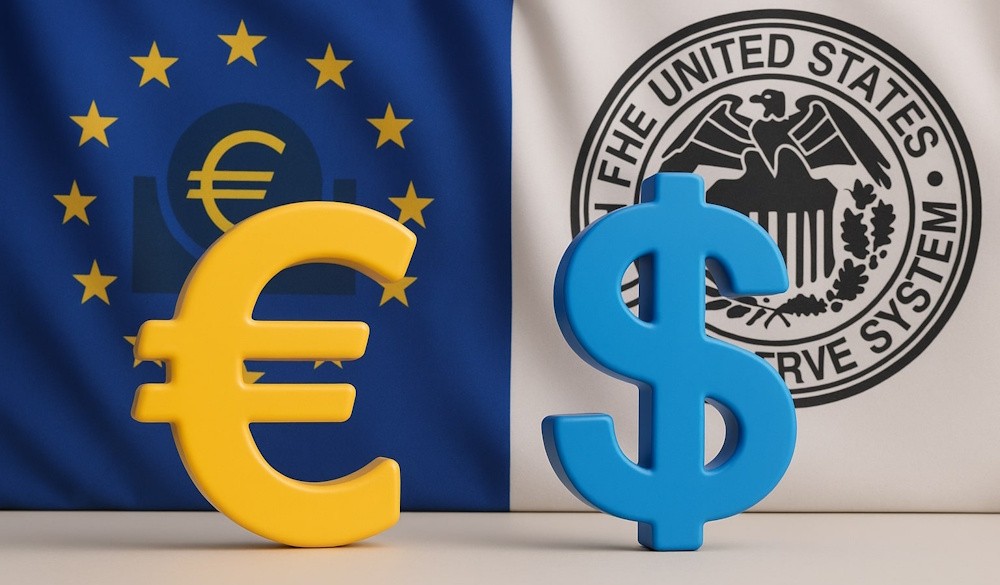The EUR/USD pair was observed trading around 1.1707 during the late European session, reflecting its lowest level in more than a month amid concurrent fiscal and political crises affecting both sides of the Atlantic. The euro’s inability to maintain momentum above 1.1750 indicates a delicate balance between European political risk and U.S. monetary uncertainty. The market is currently processing the implications of the French Prime Minister’s resignation, which is contributing to increased instability within the Eurozone. This development coincides with the U.S. government shutdown, now in its fifth day, which is interrupting critical data releases and eroding investor confidence in fiscal governance.
The U.S. Dollar Index experienced a slight increase, hovering around 98.05. This movement was underpinned by a cautious market sentiment, yet it faced limitations due to rising expectations for a 25-basis-point rate cut by the Federal Reserve during the meeting on October 29, alongside an 83% likelihood of a further cut in December. Fed policymakers are experiencing a split in opinions: Governor Stephen Miran advocates for more substantial cuts to address the economic slowdown, whereas Dallas Fed President Lorie Logan cautions about ongoing inflationary threats in non-housing services. This divergence causes traders to be cautious about taking aggressive short positions on the dollar, which in turn restricts the potential for euro appreciation. With liquidity diminishing due to the shutdown, the dollar’s function as a global reserve hedge has hindered the pair’s recovery, despite the flattening of yields across the Treasury curve.
In Europe, political developments have become a headwind for the euro. Sébastien Lecornu’s resignation as French Prime Minister resulted in a 1.36% decline in the CAC 40, causing the French-German 10-year yield spread to reach its highest level since 2020. The recent developments have rekindled concerns regarding political fragmentation in the Eurozone, prompting investors to pivot towards U.S. assets, even in light of the ongoing fiscal crisis in America. In the meantime, ECB policymaker Martins Kazaks characterized the existing interest rates as “very appropriate,” indicating the central bank’s hesitance to modify policy due to short-term fluctuations. The ECB’s cautious approach has provided the euro with a degree of stability; however, it remains insufficient to mitigate the systemic risks arising from the turmoil in France and the uneven growth patterns observed in Germany and Italy. Recent data highlights a gradual yet inconsistent recovery within the Eurozone. In August, retail sales experienced a year-on-year increase of 1.0%, a decline from the 2.1% recorded in July, indicating a slowdown in household spending momentum. The Sentix Investor Confidence Index is projected to stay in negative territory, underscoring a prudent perspective for Q4 growth. Regarding inflation, the ECB minutes indicate a tendency to uphold existing policy until there is definitive proof of a decline in demand. This policy stability stands in stark contrast to the Fed’s dovish pivot, elucidating the euro’s relative steadiness even amid significant downside pressure.
The current U.S. government shutdown, which has reached its fifth day, persists in obscuring economic clarity. The delay in the nonfarm payrolls report continues to exacerbate the information void for markets. Investors are strategically positioning themselves defensively in anticipation of Wednesday’s FOMC minutes, expecting language that reaffirms a bias towards policy easing. This week’s modest recovery of the dollar is thus attributed to technical factors rather than structural ones. In the absence of fiscal clarity or a data-driven policy anchor, the dollar faces the potential for renewed weakness as the month concludes. This scenario could indirectly bolster EUR/USD above 1.1650, provided that political risks in the Eurozone diminish.

